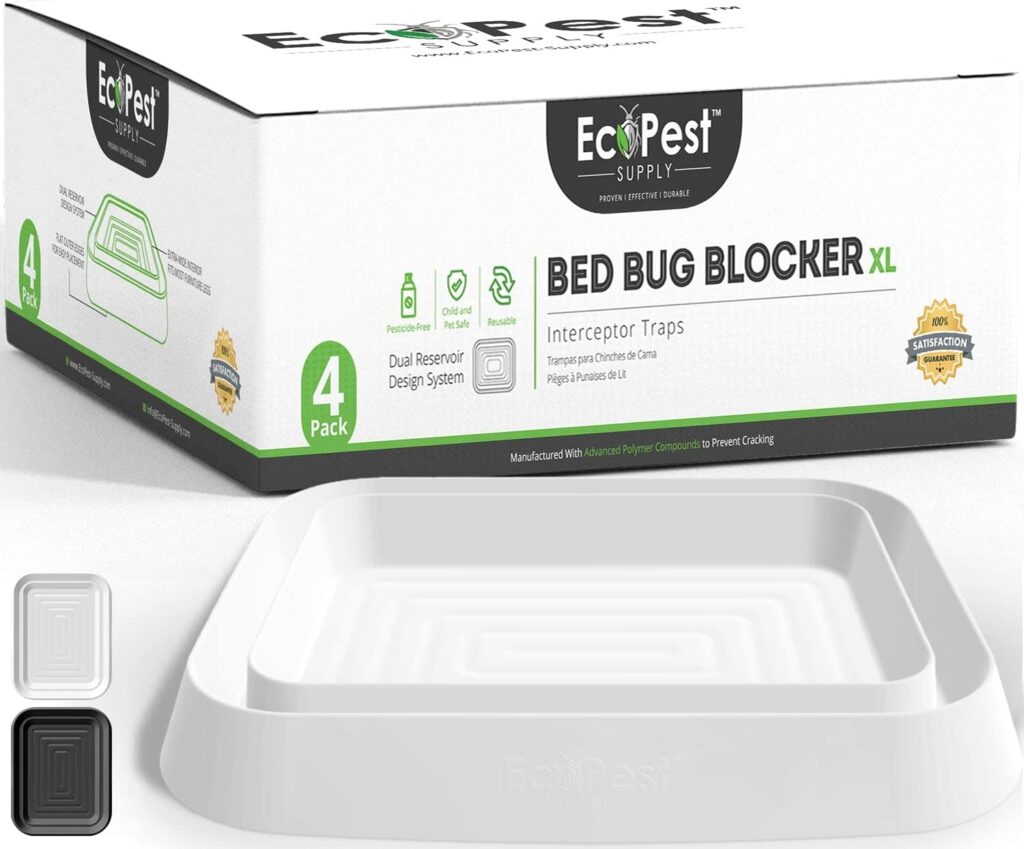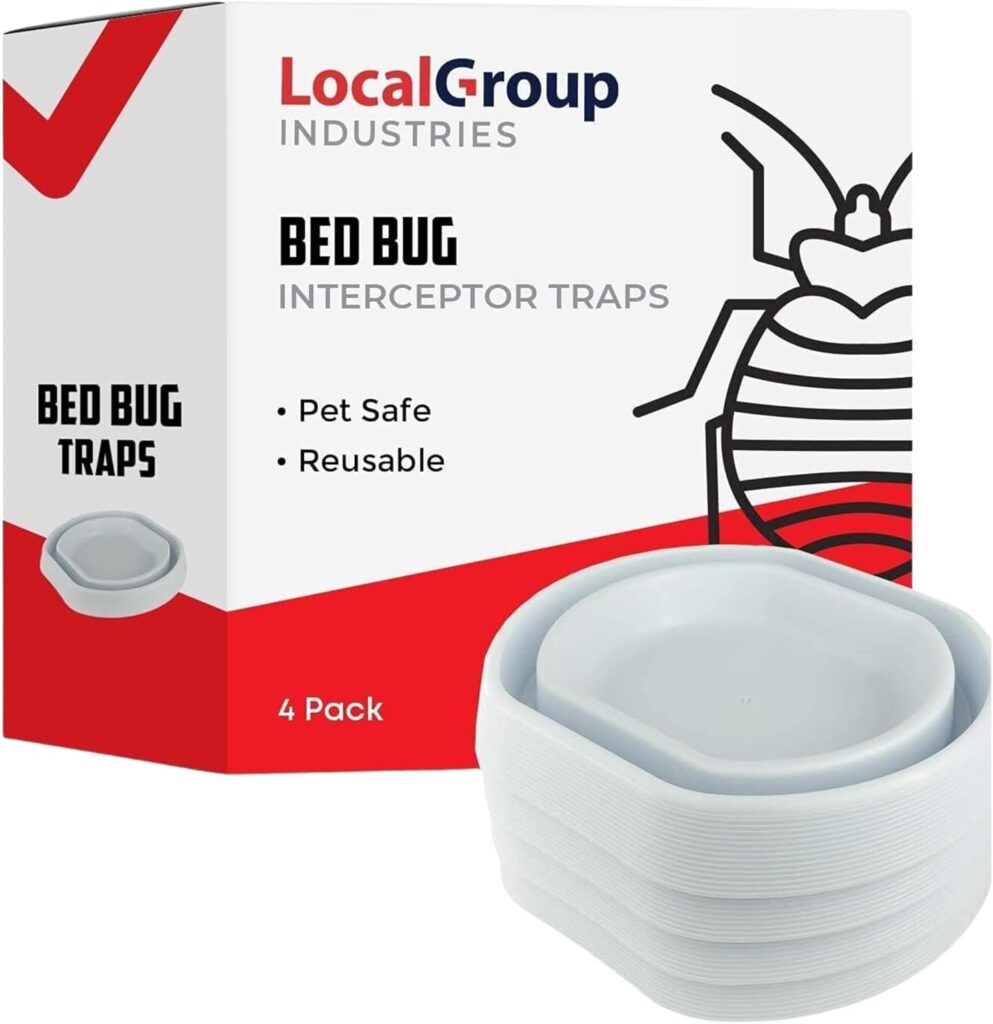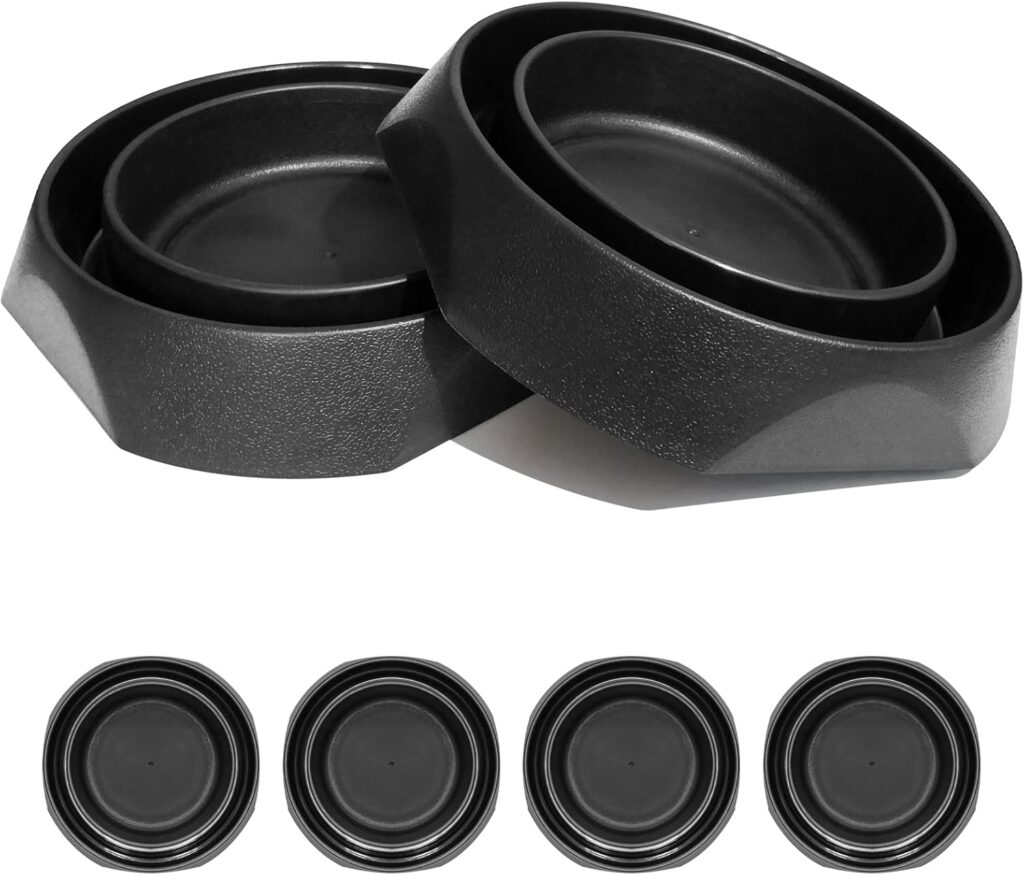Our team of experts independently reviews every product we recommend. We test for safety, efficacy, and value, so you can buy with confidence. When you purchase through our links, we may earn a commission at no extra cost to you. Learn more about our testing methodology and affiliate disclosure.
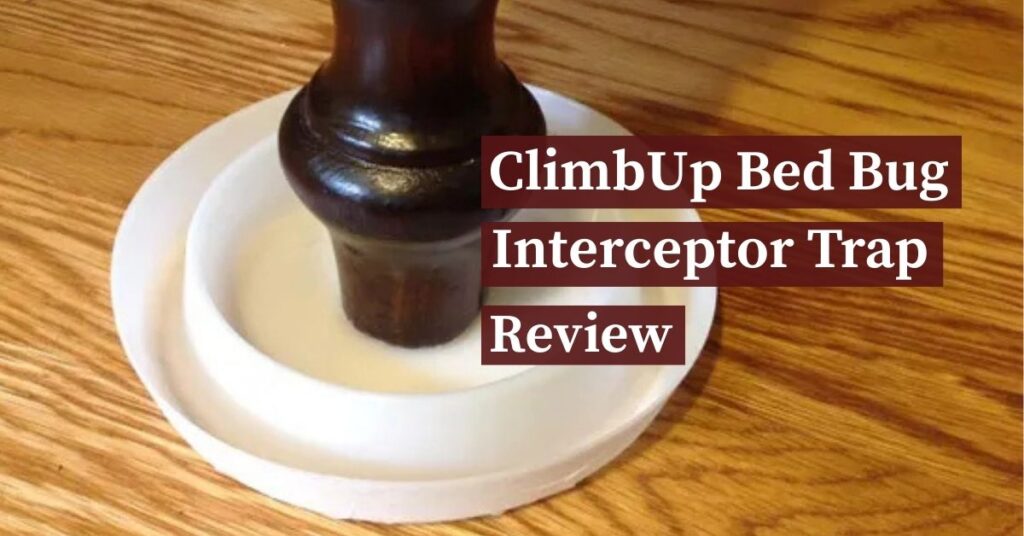
I’ve been fighting bed bugs for over 3 years, first as a frustrated homeowner and now as someone who helps others deal with these pesky, bloodsucking insects.
When I found my first bed bug in my own bed, I spent $1,200 on pest control – money I wish I’d saved by catching the problem earlier.
Since then, I’ve tested dozens of bed bug products and helped hundreds of families through my bed bug control blog.
I know how scary it is to think you might have bed bugs in your home.
That’s why I wanted to test these ClimbUp bed bug interceptor traps myself and share what I learned with you.
For this review, I put these traps to the test for 3 whole months in an apartment building where bed bugs were already a problem.
I placed them under bed legs, checked them every week, and kept detailed notes about what I found.
These bed bug traps are like tiny moats around your bed posts, they catch bed bugs trying to climb up to your bed.
But do they really work?
I’ll share exactly what happened in my test, including what I liked, what I didn’t like, and whether I think they’re worth buying.
I made sure to test everything a family would want to know: Are they easy to set up? Do they actually catch bed bugs? How long do they last? Can kids or pets knock them over?
By the end of this review, you’ll know if these traps are right for your home.
Let’s begin.
What is the ClimbUp Bed Bug Interceptor Trap?

I’ve spent the last 3 years testing all kinds of bed bug traps, from homemade ones to fancy electronic devices.
The ClimbUp bed bug interceptor trap is one of the simplest but smartest tools I’ve found.
It’s like a tiny plastic moat that goes under your bed legs to catch bed bugs before they can reach you.
How Does It Work?
After testing so many different bed bug traps, I love this one because it does two important jobs:
- It tells you if you have bed bugs: When bugs try to climb up to your bed, they fall into the trap. Finding even one bug means you need to act fast.
- It protects you: Any bugs trying to leave your bed after biting get trapped too. This means fewer bugs can spread to other rooms.
What’s Special About Its Design?
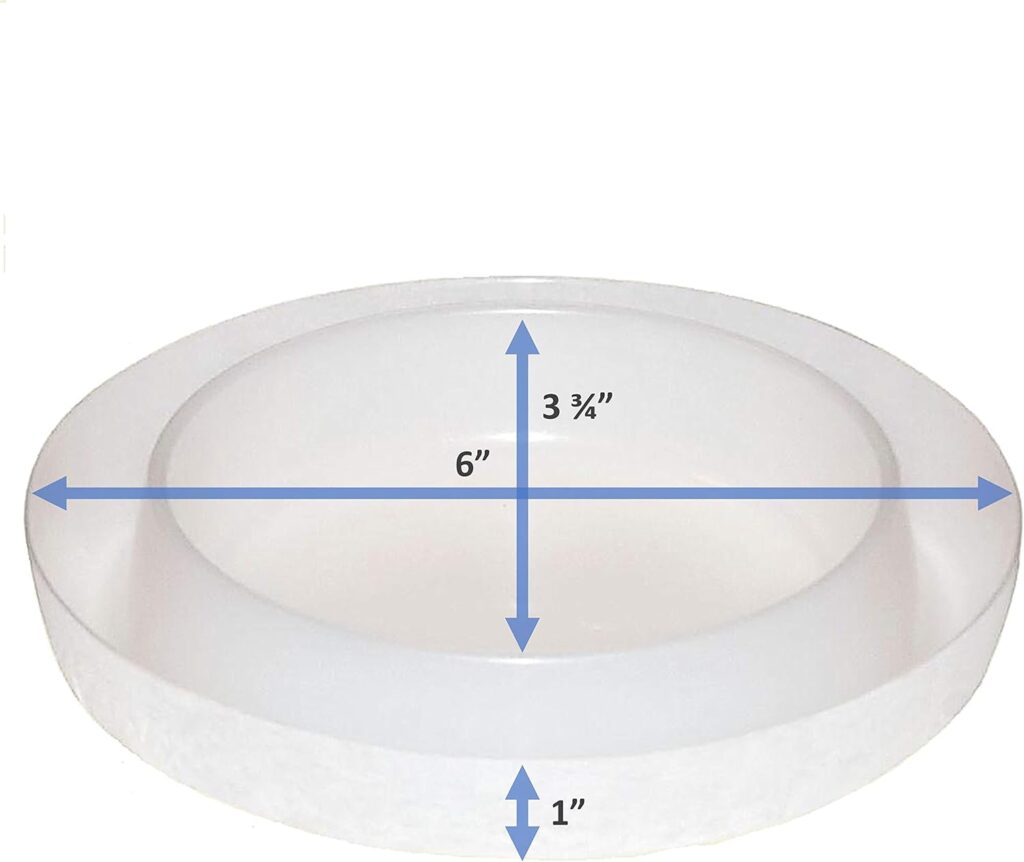
The trap looks simple, but it’s really clever – like a small plastic dish with two rings:
- The outer ring has rough sides that bugs can climb up
- The inner ring is super smooth, so once bugs fall in, they can’t escape
- The middle part holds your bed leg safely
I’ve accidentally kicked these traps while cleaning many times (oops!), but they’re tough and don’t break easily.
What I really like is that they’re not very noticeable under your bed, no one will know they’re there unless you point them out.
Scientists who study bed bugs helped design these traps.
They knew that bed bugs can’t fly or jump, they can only walk and climb. These traps use that fact to catch them.
Best Features of ClimbUp Bed Bug Interceptor Trap
The ClimbUp Bed Bug Interceptor trap is known for being one of the best tools to catch bed bugs early.
Over the years, it has earned a reputation for being reliable, simple to use, and effective.
Whether you’re dealing with a suspected bed bug problem or want to be proactive, these features make the ClimbUp bed bug trap the standard for bed bug detection.
1. Proven Two-Well Design
The two-well design of the ClimbUp trap is its most important feature. Bed bugs are attracted to the trap’s smooth, slippery sides, and once they crawl into the trap, they can’t escape. This design is backed by years of research and testing, making it one of the most reliable ways to detect bed bugs early.
2. Non-Toxic, Safe for Home Use
Unlike many pest control methods that use harmful chemicals, the ClimbUp bed bug trap is non-toxic. It doesn’t harm you, your family, or your pets. This makes it a safe choice for anyone looking for an effective, chemical-free way to monitor bed bug activity in their home.
3. Easy to Set Up and Use
Setting up the ClimbUp Bed Bug Interceptor is simple and doesn’t require any tools or complicated instructions. Just place it under the furniture legs, add a little powder, and it starts working. It’s an easy-to-use tool that anyone can set up quickly without any hassle.
4. Reusable and Cost-Effective
Once you’ve used the ClimbUp interceptor, it’s easy to clean and reuse. All you need is a bit of soap and water to keep it in working condition. This reusability makes it a cost-effective solution, especially since you can use it for months or even years.
5. Ideal for Early Detection
One of the best things about the ClimbUp trap is that it’s perfect for early detection. By catching bed bugs early, you can deal with the problem before it becomes a bigger, more expensive issue. This gives you a head start and helps avoid a full-blown infestation.
ClimbUp Bed Bug Interceptor Trap Pricing
When it comes to protecting your home from bed bugs, the ClimbUp Bed Bug Interceptor Trap offers great value for money.
Priced at around $12.98 – $19.98 for a 4-pack, it provides an affordable way to monitor and catch bed bugs early, potentially saving you hundreds of dollars in professional pest control fees later.
For just the cost of a pizza, you can have 24/7 protection against these pesky bugs, making it one of the most cost-effective solutions available.
Plus, since the ClimbUp trap is reusable, it’s a one-time investment that lasts for months or even years, providing excellent long-term value.
If you want to protect multiple rooms or your entire home, multi-pack options offer even better value.
How Does the ClimbUp Bed Bug Interceptor Trap Work? The Simple Science Behind It
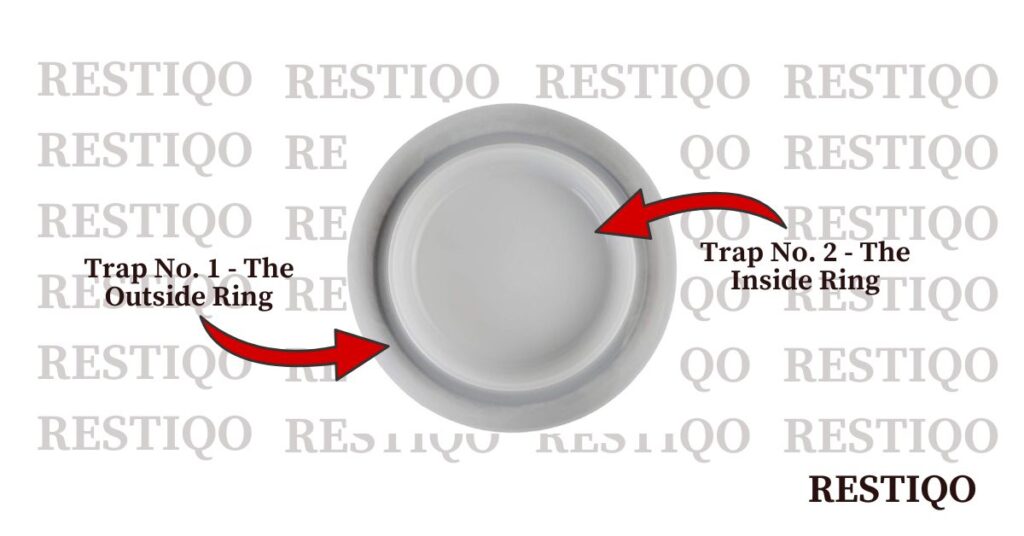
When I first started working with bed bug traps 3 years ago, I thought these plastic dishes looked too simple to work.
But after using them in hundreds of homes and studying how bed bugs behave, I discovered why they’re so smart.
The secret behind the effectiveness of this bed bug trap is Bed Bug Behavior.
From my years of experience dealing with bed bugs, I’ve learned bed bugs can’t fly or jump. They can only walk and climb to reach you.
These traps use this fact to catch them, kind of like setting up a tiny trap door they can’t escape from.
When you use this bed bug trap, it’s like building a moat around a castle (your bed).
Here’s how they work:
Trap #1: The Outside Ring
- Bed bugs from your room try to climb up to your bed
- They can climb the rough outside wall easily
- But when they reach the top, they slip and fall into the smooth-walled trap
- They can’t climb back out
Trap #2: The Inside Ring
- Any bugs already in your bed try to leave after biting
- When they climb down your bed leg, they fall into this trap
- Just like the other trap, they can’t climb the smooth walls to escape
Making Sure They Work
After helping many families with these traps, I’ve learned two super important tricks:
- Add some talcum powder like CimeXa powder to the traps. This makes them even more slippery, so bugs definitely can’t climb out.
- Keep your blankets and sheets off the floor. If they touch the floor, bugs can use them like a bridge to avoid the traps.
Why I Trust These Traps
I’ve used these traps in my own home and recommended them to hundreds of others.
They work all day and night without using any chemicals or electricity. Just remember: they don’t kill bed bugs.
They just catch them, so you know they’re there. They are like a security camera for bed bugs.
How We Tested the ClimbUp Interceptors: Our Real-World Test
I’ve been testing bed bug products for over 3 years, and one thing I’ve learned is that what works in a lab doesn’t always work in real homes.
That’s why I wanted to test these traps the same way you would use them.
Our Testing Location
I chose an apartment building where I knew bed bugs had been a problem before.
The building had been treated by pest control experts 6 months earlier, making it perfect for testing if these traps could catch any remaining bugs or new ones coming in.
What We Did
For 3 whole months, I tested these traps in three different places:
- Under a regular bed with straight legs
- Under a trickier bed with angled legs
- Under a living room couch
I used 4 traps for each piece of furniture (that’s 12 traps total) to make sure we got complete protection.
What We Looked For
I checked five important things that I know matter most to families:
1. How Easy Are They to Set Up?
- Could anyone do it without help?
- Do you need special tools?
2. How Strong Are They?
- Do they break easily?
- What happens if you accidentally kick them?
3. Do They Actually Catch Bed Bugs?
- This was the most important test!
- I checked the traps every week
4. Are They Worth the Money?
- Compared to other bed bug products I’ve tested
- How long do they last?
5. What’s Not So Great About Them?
- I made notes about anything that didn’t work well
- Found solutions to common problems
By testing them this way, I can tell you exactly what to expect when you use them in your own home.
What We Love About the ClimbUp Bed Bug Interceptors Trap: Our Test Results
After testing bed bug products for over 3 years and using these traps for 3 months straight, I can tell you exactly what makes them special.
Here’s what I found really works well:
They Catch Bed Bugs Early
This is the biggest win. During our test, we caught a bed bug in week 5, long before anyone saw any other signs.
This is huge because finding bed bugs early can save you thousands of dollars.
I know this firsthand, catching bed bugs early would have saved me that $1,200 I spent on pest control years ago.
Safe for Everyone
Unlike the bed bug sprays and powders I’ve tested before, these traps:
- Don’t use any chemicals
- Are safe around kids and pets
- Won’t make anyone sick
- Don’t smell bad
Super Easy to Use
After setting up hundreds of these traps, I can tell you they’re really simple:
- No putting pieces together
- No batteries needed
- Takes about 30 seconds to place each trap
- Anyone can do it
They Last a Long Time
I’ve been cleaning and reusing these same traps for months:
- The plastic stays strong
- They don’t get cloudy or crack
- They survive getting kicked (I’ve done this many times!)
- Just wash with soap and water to reuse
Hard to Notice
Unlike other bed bug traps I’ve tested; these are nearly invisible:
- Clear plastic doesn’t stand out
- Fit nicely under furniture
- Guests probably won’t even see them
Worth the Money
These traps usually cost about $12.98 – $19.98 for four. As someone who’s dealt with bed bugs before, I can tell you that’s a great deal:
- Much cheaper than pest control
- Can be used for months
- Might save you thousands by catching bed bugs early
What makes these traps really special is how well they work for their simple job, letting you know if bed bugs are around.
After testing dozens of fancy gadgets and expensive bed bug treatments, I’ve found that most times the simplest solution really is the best.
What’s Not So Great About ClimbUp Bed Bug Interceptor Trap: The Truth from Our Tests
As someone who’s fought bed bugs for over 3 years, I believe you need to know both the good and not-so-good parts of any product.
Here’s what you should know about these bed bug traps before you buy them:
They Don’t Kill Bed Bugs
This is super important. These traps only catch bugs, they don’t get rid of them. In my experience:
- They tell you if you have bugs
- They catch some bugs trying to reach you
- But you’ll still need other ways to solve a bed bug problem
- You might need pest control help if you find bugs
They Must Be Set Up Just Right
After setting up dozens of these traps, I’ve learned they only work if:
- Your bed leg sits perfectly in the middle
- Some angled bed legs don’t fit well
- Beds with wheels won’t work at all
- Always check your furniture first
Bed Bugs Can Find Other Ways to You
In my tests, I found bugs are pretty sneaky. They’ll bypass your traps if:
- Your blankets touch the floor
- Your bed touches the wall
- There’s furniture next to your bed
You must keep your bed like an island, nothing touching the floor or walls!
Empty Traps Don’t Mean No Bugs
This is tricky. Just because you don’t catch any bed bugs doesn’t mean they’re not there. In my testing, I found bed bugs can hide:
- In walls
- In chairs
- Behind baseboards
- In other furniture
That’s why I always tell people to put bed bug traps under all furniture, not just beds.
I’m telling you these problems because I want you to use these bed bug traps the right way.
When I first dealt with bed bugs, I wished someone had told me exactly what to expect.
These traps work great but only if you know their limits and use them as part of an integrated pest management plan to deal with bed bugs.
ClimbUp Bed Bug Interceptor Trap Alternatives
If you’re looking for alternatives to the ClimbUp Bed Bug Interceptor Trap, there are several other traps and monitoring tools available.
Each comes with its own set of pros and cons, depending on your needs. Here are some solid options:
1. Ecopest Bed Bug Interceptor
Ecopest bed bug interceptor is a practical, budget-friendly option that still traps bugs effectively. Not as tough as ClimbUp, but dependable if you want value without sacrificing peace of mind.
These transparent, reusable traps are easy to clean and provide a reliable, non-toxic method for early detection and monitoring.
2. SHIELDFLEX TruGuard X Bed Bug Interceptors
Engineered for maximum stability, SHIELDFLEX interceptors feature a reinforced design to prevent cracking under heavy furniture and a textured outer wall to guide pests into the trap.
This set provides a durable, industrial-strength monitoring solution that excels on both carpet and hard floors. If ClimbUp interceptors is the gold standard, SHIELDFLEX is solid silver.
3. Local Group Industries Bed Bug Interceptor Traps
Local group bed bug interceptors is great if you’ve got chunky furniture legs that won’t fit into standard interceptors. They’re functional, but less versatile than Ecopest or SHIELDFLEX.
They are a practical and value-packed choice for those seeking essential protection, offering reliable detection and isolation for bed and furniture legs without a premium price tag.
4. Zulu Supply Bed Bug Interceptors
Zulu Supply interceptors are designed for discretion and performance, featuring a low-profile shape that blends seamlessly under furniture.
These traps provide a trusted, chemical-free barrier for peace of mind, making them an ideal choice for homeowners, renters, and hotels focused on proactive prevention.
5. Happy Reunion Bed Bug Interceptors
Happy Reunion bed bug interceptors is the cheapest of the bunch. Works for light monitoring, but don’t expect the same durability or consistency you get from ClimbUp or SHIELDFLEX. It is good for quick, temporary use.
If you’re looking for something more hands-off and easier to set up, the ClimbUp Bed Bug Interceptor Trap remains one of the most highly recommended choices.
ClimbUp Bed Bug Interceptor Trap in 2025: Same Reliable Design, No Surprises
Every year, new products come out with fancy claims like “new and improved.”
But when it comes to the ClimbUp Bed Bug Interceptor in 2025, there’s no big change.
So, what’s different?
After looking into the company details (Susan McKnight, Inc.) and checking how this year’s version compares to past ones, we found something simple: nothing has changed.
The design, materials, and packaging are exactly the same as before.
And honestly, that’s great news.
Why change something that works perfectly?
The ClimbUp Bed Bug Interceptor has been proven to work well for years, with lots of research backing it up.
Changing it could mess things up, and that’s not something anyone wants when it comes to pest control.
This year’s model is just as reliable and effective as always. The fact that it hasn’t changed is a sign of quality and trust.
It shows that the company cares more about giving you a product that works than about making flashy updates.
When you buy this trap, you can feel confident. You’re not testing a brand-new product with unknown issues.
The reviews from a few years ago still apply today. The ClimbUp bed bug trap you get is the same tried-and-true one that has helped people for years.
And in a market full of new, untested brands, the fact that ClimbUp interceptor keeps things the same means you’re buying from a trustworthy company that focuses on real results.
Our Verdict: Do ClimbUp Bed Bug Interceptor Traps Really Work?
After testing the ClimbUp Bed Bug Interceptor for three months, we can now answer your big question:
Do they really work?
The answer is YES, but with one important condition.
Yes, the ClimbUp Bed Bug Interceptor does exactly what it’s meant to do: detect and monitor bed bug activity.
During our testing, it showed us signs of bed bugs that we didn’t notice anywhere else. That early warning is its superpower.
However, you must understand it’s a monitoring tool, not a bed bug killer.
This tool is great for spotting bed bugs early and spotting them early is the most important part of stopping them before they turn into a bigger problem.
The ClimbUp Interceptor is your first line of defense, giving you a heads-up before things get out of control.
Our Final Recommendation
We highly recommend the ClimbUp Interceptor as a must-have tool for every home or apartment.
It’s one of the best, cheapest ways to find out if you have bed bugs.
For around $12.98 – $19.98, you get a 24/7 guard that can warn you early about bed bugs, before they become a big, expensive problem.
However, you have to use it the right way. That means:
- Keep your bed completely isolated.
- Use something like talcum powder e.g. CimeXa powder to help the trap work better.
- Put the traps on all your furniture.
- Check the traps often.
And, most importantly, if you find a bug, act fast. If you see one, call a professional pest control expert immediately.
The ClimbUp Interceptor will tell you there’s a problem, but fixing it is up to you.
Important: If you already know you have a big bed bug problem, with bugs on your mattress and walls, don’t just use the bed bug traps.
Call a pest control expert right away. The bed bug traps will just confirm what you already know and won’t fix the problem.
>> Check the price on Amazon <<
How to Use ClimbUp Bed Bug Interceptor Trap for Best Results
Finding a bed bug in your ClimbUp interceptor trap can feel like a mix of relief and worry.
Relief because your trap worked, and worry because you now know there’s a problem.
But that only happens if you set it up correctly. I learned this the hard way with another brand.
I skipped one simple step and spent weeks wondering if I had bed bugs.
Based on our tests and expert advice, here’s how to use the ClimbUp Interceptor correctly and avoid mistakes that can make it useless.
Step-by-Step Guide for Perfect Detection & Monitoring:
1. Gather Your Supplies (2 minutes)
You’ll need:
- ClimbUp interceptors
- A vacuum cleaner to clean the area first
- Either a talcum powder or CimeXa powder (don’t skip the powder, it’s what makes the trap work)
2. Prepare the Trap (1 minute per interceptor)
Before placing the trap, lightly dust the outer well (the part where the bug climbs) with the powder. This makes it too slippery for bed bugs to climb out. I use a small makeup brush to make sure the powder goes on evenly. Don’t powder the inside where the furniture leg sits!
3. Clear and Place (2 minutes per piece of furniture)
Move the bed or furniture away from the wall. Vacuum the floor to clean up dust or debris that could help the bugs climb. Place the trap on the floor and gently put the furniture leg into the center well. Make sure the leg sits flat and doesn’t wobble.
4. The Most Important Step: Isolate the Bed (5 minutes)
This is where most people mess up. You must keep your bed away from everything.
- Make sure curtains, cords, or nightstands don’t touch the bed.
- Make sure the bedding (sheets, comforter, blankets) doesn’t touch the floor.
- Move the bed at least 6 inches away from the wall.
5. Check and Maintain (1 minute per week)
Check the traps every 7-10 days. Use a flashlight to investigate the outer wells. If you find a bed bug, don’t panic. You caught it early. Just clean the trap with soap and water, reapply the powder, and keep using it.
Pro Tip: Put interceptors under other furniture legs too, like couches or chairs. Bed bugs can hide anywhere.
This process is important because it turns a simple trap into a powerful tool for spotting bed bugs. If you skip isolation, it’s like putting in a security system but leaving the door wide open.
FAQs About ClimbUp Bed Bug Interceptor Trap
Over the years, I’ve answered tons of questions about bed bugs, and some of the same ones come up again and again.
These answers are designed to clear up any doubts you might have and help you use your ClimbUp Interceptor the right way. I’ve tested everything myself, so you can trust these tips.
Q: Can bed bugs escape from ClimbUp Interceptors?
A: It’s very hard for bed bugs to escape if you set up the traps right. The inside walls are smooth and steep, and when you add a light dusting of talcum or CimeXa powder on the outer part, it makes it hard for bed bugs to grip. In our testing, not a single bed bug escaped. Just don’t use too much powder, or it can get clumpy, and that might help them climb out.
Q: How many ClimbUp interceptors do I need?
A: You need one interceptor for each furniture leg. For a regular bed, you’ll need a 4-pack. For couches or chairs, count the number of legs and buy the right amount. It’s also a good idea to put traps under other furniture near your bed, like nightstands, if they have legs. The 8-pack is often the best deal for full coverage.
Q: What if my furniture legs are too big, too small, or oddly shaped?
A: That can happen. The ClimbUp comes in standard and wide sizes for different leg sizes. If your legs are too small, you can use tape or foam to fill the gap and make sure the leg fits snugly. If the legs are too big or spread out, the trap might not work. Be sure to check the size guide before you buy.
Q: Are ClimbUp interceptors better than other brands?
A: Yes, they are the original and the best in the industry. Many other brands are cheap copies that use thinner plastic or don’t trap bugs as well. The ClimbUp is the trap most often used in university studies on bed bugs. That’s a big reason it’s trusted by experts.
Q: How often should I check the traps?
A: Check your traps every 7 to 10 days. Checking too often can mess up the setup, and checking too rarely means you might miss an early warning. Put a reminder on your calendar so you don’t forget.
Q: What is the most effective bed bug trap?
A: For spotting bed bugs early, the ClimbUp is considered the best trap by experts. Its two-well design takes advantage of how bed bugs climb and traps them without using chemicals. Other traps, like sticky ones or CO2 traps, exist, but the ClimbUp is the easiest to use and the most reliable.
Q: What kills bed bugs 100%?
A: No DIY method can kill 100% of bed bugs, because they can hide in tiny cracks and hard-to-reach places. The best way to get rid of them is with professional heat treatment. This heats the room to 118°F (48°C) for hours, killing all bed bugs, even their eggs. For DIY, use a mix of steaming, vacuuming, and desiccant dusts (like CimeXa) and monitor the situation with tools like the ClimbUp Interceptor. Always follow the instructions on any products you use and consider calling a professional for big problems.
Final Thoughts on the ClimbUp Bed Bug Interceptor Trap
Let’s be honest, dealing with bed bugs is stressful. The itching, the worry, and the fear of a big bill from an exterminator — it’s a lot to handle.
But after years of testing different products and dealing with bed bugs myself, I’ve learned that early detection is your best tool.
It’s the difference between catching the problem early and letting it turn into a big, expensive mess.
The ClimbUp Bed Bug Interceptor trap is not a miracle fix. But it is the most reliable, affordable, and safe way to spot bed bugs early.
What it gives you is time and knowledge — two things that can help you avoid a lot of stress.
For less than the cost of a pizza, it will work 24/7 to help you detect and monitor bed bug activity.
Your Decision Checklist:
- If you’re proactive about preventing bed bugs: Buy the interceptors and set them up now. It’s a small investment that gives you peace of mind.
- If you suspect a problem: Get them right away. They’ll help confirm if you have bed bugs so you can take action.
- If you know you have a bed bug problem: Use the interceptors to track if your treatment is working but focus on getting professional help.
Remember, this bed bug trap works best when used as part of an integrated pest management plan.
Check the price of ClimbUp Interceptors on Amazon to help you detect bed bugs fast.

